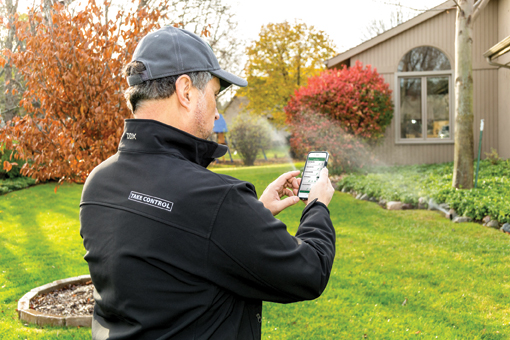Consider a premilinary study of the Irrigation System

The life cycle of an irrigation system is composed of several different phases: planning, installation, operation and maintenance. At each stage, every effort should be made to make the work as straightforward as possible for those involved further down the line. As the study (designing the irrigation system) is the first of these stages, it will, therefore, affect the installation, operation and maintenance, so it, therefore, takes on a special significance.
Whatever his or her role – landscape architect, design engineer, retailer, installer, etc. – the person who has to carry out the study must not only take these requirements into account, but also be aware of the water management aspect at all times.
The person carrying out the study will have a number of different means at his or her disposal: software programmes (installed on the computers or accessible on-line), manufacturers’ catalogues, miscellaneous documents (in paper or electronic format).
Generic computer-aided design software is available, as well as more specific software for landscaping or, in particular, irrigation design, with BIM (Building Information Modelling) software due to be phased in over the coming years.
There is something for everyone among the different software tools on offer, whether the requirement is precision, ease of use, format of the documents released, degree of automation or control over the way the study is carried out.
An installer of residential irrigation systems can put his pencil and compass calipers to one side and opt to use on-line software (on the manufacturer’s web site, for example), while the design and engineering firm will be able to become involved with the BIM software, the aim for everyone concerned being to benefit in terms of quality and productivity.
Training is an important, even essential, aspect. Someone who does not know the basic principles of irrigation will be unable to be fully informed about what the software can do for him or her.
The designer, therefore, has to be proficient in each stage of the study.
Whether they are carried out manually or with a software programme, the main phases are as follows:
– Collect all the necessary information
– Select and set up the sprinklers and the micro-irrigation system
– Assemble the networks
– Determine the position and dimensions of the pipes
– Select the solenoid valves
– Calculate the head loss
– Choose the controller
– Determine the position and dimensions of the cables
– Go over the documents: plan, calculations, list of equipment
The “necessary information” consists of a site plan drawn to scale, which clearly shows the zones to be irrigated and type of crop, the zones not to be wetted, the position of the water supply (with the available flow rate and pressure if this information exists), the availability of electric power, evapotranspiration and gradients. In order to be able to carry out a more detailed study, we can add the following to the list: obstacles in the path of the pipes and cables, existing ducts, pipes, conduits and tunnels, exposure to the sun and wind, soil type and any other useful information.
The tools used to create this plan have also benefited from technological advances: laser, drones, aerial photos or satellites, GPS, etc. All these devices are available at a modest cost.
It is essential to be familiarised with the equipment in order to be able to choose the one that most meets your needs.
If someone who has been carrying out studies for many years has not received any vocational training, he or she should at least be kept informed about any new products and the latest technologies.
There are considerable resources available today, especially in the area of water management, whether this relates to public or private green spaces, sports fields, golf courses and even private residences.
Technological advances in the field of communication play a leading role in the development of new irrigation management systems, without forgetting the sprinklers and micro-irrigation systems, which are also constantly being developed.
We also now have sprinklers that apply the water with even greater uniformity, self-regulating drip irrigation systems (constant flow, whatever the pressure), with anti-root intrusion systems (so they can be buried below ground) and anti-draining devices (to prevent the system emptying at the end of each irrigation).
However, most progress has, without doubt, been made in the development of the controllers over the last few years.
Some of these can be managed remotely via the computer (+software), smart phone or a tablet (+ application) or by using an automation system, the latter via fixed or Wi-Fi data networks, using Bluetooth, GPRS or radio
They are capable of calculating the amounts of water to be applied according to the meteorological conditions (evapotranspiration calculated by the weather station or by using on-line data), type of soil, depth of the roots, precipitation rate of the equipment, etc.
Some are able to detect leaks or just calculate water consumption with the assistance of pulse meters or flow rate sensors.
It is also possible to remotely control the battery-operated programmers, which would be an attractive option for the municipalities who have them because their agents would not have to go around all the city’s controllers each time that the duration of the irrigation is changed or when irrigation has to be stopped.
There are also countless accessories to be added to the list, such as the meteorological stations or rain, wind or temperature gauges, soil moisture sensors…
Apart from the means available for the elaboration of a study, a wide range of equipment is now available to the designer to make life easier for the user while managing the water resource more effectively, allowing savings to be made on time, water and, consequently, money, while, at the same time, conserving the environment.